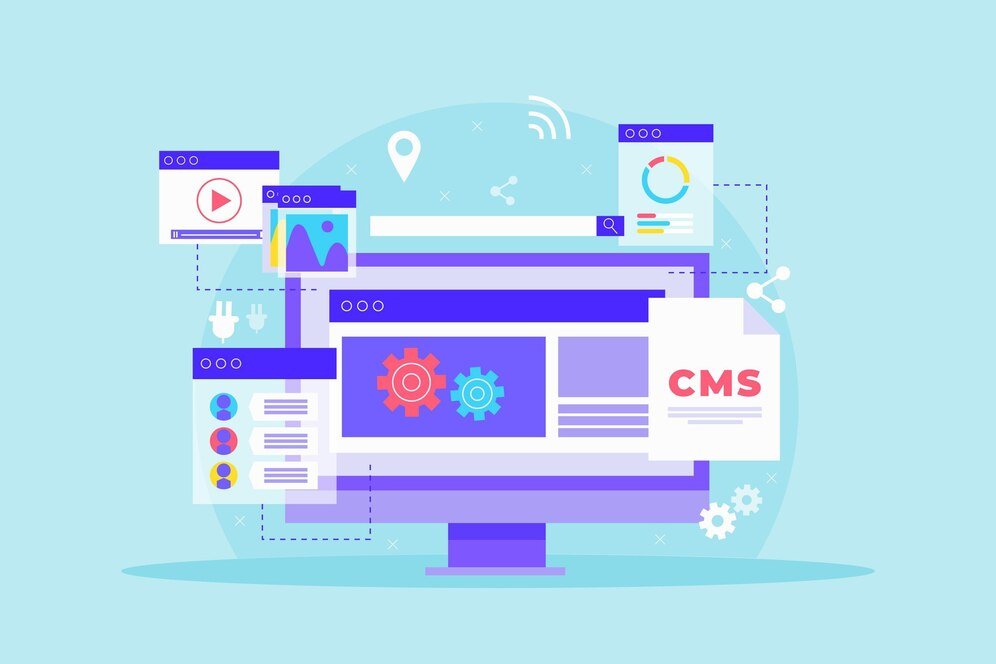Web development is an interesting and rewarding career. Many professionals/freshers want to be a part of this lucrative industry as it offers attractive pay packages and allows them to work from home or office.
Begin by learning HTML (HyperText Markup Language) and CSS (Cascading Style Sheets). Learn about front-end and back-end development.
Website Development
The website is the foundation of a company’s online presence. It allows consumers to interact with a brand easily and provides the information they need to make decisions. A well-designed website will build trust and increase the likelihood that consumers will purchase products or services from a business.
Web development includes the programming and coding needed to create websites for hosting on the intranet or the internet. Professionals who perform this work are called web developers or, more colloquially, “web devs.” Their responsibilities include creating the site’s structure and layout, client liaison, content development, network security configuration, e-commerce development, and more.
One of the most important aspects of web development is search engine optimization or SEO. It ensures that a website is listed prominently in search engine results pages (SERPs) when users conduct relevant searches. In addition, it helps to improve user experience by making sites more intuitive and easier to navigate.
Another aspect of web development is internationalization or the process of making a website usable by people from different cultures who speak different languages. There are both technical considerations in this area (such as ensuring that text is readable on screen for left-to-right-reading languages) and human ones (such as using clear, simple language that non-native speakers will understand). Other important aspects of web development are scalability and performance. These involve the balancing of processing power and bandwidth amongst servers when there is a high load on one server, and designing the software to run on a cluster so that additional servers can be added when necessary.
E-commerce Store Development
E-commerce is a vital part of any business that aims to expand its reach and boost revenue. However, building an online store isn’t as simple as setting up a shopping page and accepting payments.
Numerous aspects need to be taken into account. Having a functional website with clear product categories, search functionality, and a streamlined checkout process is essential for the user experience. It’s also important to optimize your site for mobile devices as shoppers are increasingly using them to shop. This requires a responsive, mobile-friendly web design or even a dedicated mobile app.
It’s also crucial to offer flexible and convenient payment options, as nine out of ten consumers say they would spend more online if there were additional payment options. To facilitate these features, you’ll need to integrate your e-commerce website with various payment gateways. This will ensure that your customers can make payments securely and easily.
In addition, it’s essential to stay updated on the latest digital technologies and implement them on your e-commerce website. From AR-based product visualization to AI-powered chatbots for customer support, staying on the cutting edge can help you deliver a more advanced digital customer experience. This will also improve your conversion rates and enhance your brand’s reputation.
Mobile App Development
Mobile apps are a key to business success. They are easy to use and provide a seamless experience for customers. They can also be used to collect customer feedback and create personalized content and engagement activities. They can even be used to target specific segments of customers based on their location or behavior.
To develop a mobile app, start by creating a wireframe or prototype. This is a visual representation of the app’s structure and will help you identify potential issues with its design. It’s also a good idea to test your prototype with users and get their feedback. This will help you refine your app and ensure that it meets your customers’ needs.
Once you’ve nailed down your app’s user experience, you can begin building it. This step is crucial, as it’s where your ideas and design come to life. It’s important to build your app with the right technology stack and development tools, which will vary depending on what kind of device you are targeting.
Full-stack developers are in high demand, as they can handle both the front and back ends of an application. They can use programming languages, frameworks, and development tools to implement the app’s core functionality, integrate features, and support data transactions. They can also use low-code development processes to streamline their work and deliver applications faster.
Social Media Marketing
Social media marketing (SMM) is a valuable way to build a brand, engage audiences, and drive website traffic. It includes creating content, monitoring and responding to social media conversations, analyzing results, and running paid social ads.
The dynamic nature of social media enables businesses to leverage free advertising opportunities through eWOM (electronic word-of-mouth) recommendations from existing and potential customers, which can have positive contagion effects on their brand. Additionally, the reach and engagement of a company’s social media channels can be measured to provide ROI (return on investment).
A robust social media strategy is crucial to building trust in a business, as it shows that the brand is active and responsive. In addition, companies can use their social media profiles to share industry insights, promote new products and services, and connect with customers on a more personal level.
To maximize the value of your social media channels, it is important to map out a team structure to ensure that you’re maximizing your time and resources. This may include establishing who will handle different aspects of your social media management, including goal setting, graphics, content creation, and social media advertisements. Additionally, a tool like Adobe Real-Time Customer Data Platform can help you understand your customers’ behavior in real-time to better tailor your marketing strategies. Watch the Real-Time CDP overview video.



